.jpg)
The F-22 Raptor, the world's most advanced fifth-generation air superiority fighter, was one of the modern aerospace programs made possible due to MIL-DTL-38999.
The MIL-DTL-38999 circular connector has been the modern standard for high-performance circular connectors for military and aerospace development for more than 50 years. Its development traces back to the mid-20th century when developers needed robust, reliable, and compact connectors optimized for the advancements taking place throughout military and aerospace technology. The growing complexity of electronic systems in aircraft, military vehicles, and space exploration missions meant that a new connector was needed that could ensure consistent performance in harsh environments, including high vibration, temperature extremes, and environmental sealing. MIL-DTL-38999 was developed to meet those demands.
Building Off MIL-C-5015

The original AN9534 circular connectors were developed for use on the Douglas DC-1, DC-2, and DC-3 aircraft.
MIL-C-5015 and its predecessors were the standard harsh environment connector prior to MIL-DTL-38999. This began with the development of the AN9534 standard in the 1930s for the Douglas DC-1, DC-2, and DC-3 aircraft. MIL-C-5015 was introduced later in 1949, building on the foundation of AN9534 by introducing enhanced standardization, improved materials, and more rigorous testing procedures to ensure greater compatibility, durability, and reliability in military and industrial applications. It also expanded the range of connector styles and sizes while incorporating advanced electrical performance features such as better shielding against electromagnetic interference (EMI) and radio frequency interference (RFI).
However as developers sought to create new systems with advanced capabilities that had tighter constraints and less weight and required greater environmental resistance, it became apparent that a new connector system was needed.
The Founding of Today’s Standard in Military and Aerospace Connectors
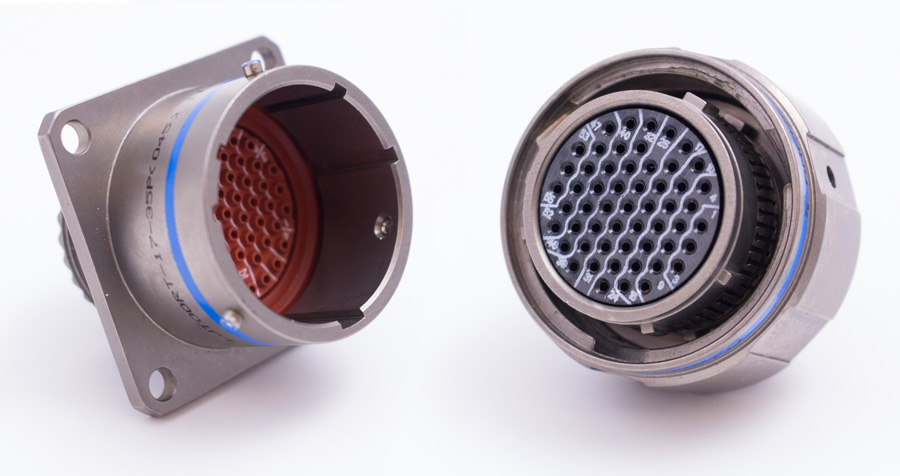
An Amphenol MIL-DTL-38999 Series I pair.
During the 1960s and 1970s, the United States Department of Defense sought to standardize and improve the quality of connectors used in mission-critical applications. This period saw a significant push for interoperability and reliability across various military platforms. Engineers and designers collaborated to create a connector that would not only meet DOD’s stringent requirements but also offer ease of maintenance and versatility. The result of these efforts was the introduction of the MIL-C-38999 standard, later redesignated MIL-DTL-38999, which quickly became the benchmark for military and aerospace connectors.
Amphenol Aerospace, under the Bendix Corporation, was instrumental in the development of MIL-DTL-38999. Bendix leveraged their extensive experience producing circular connectors dating back to World War II to spearhead the design of MIL-DTL-38999 Series I, Series II and Series III.
Key improvements were made to the MIL-DTL-38999 standard over MIL-C-5015, most noticeably regarding their size and weight. MIL-DTL-38999, depending on the series and configuration, is approximately 30-50% smaller in size and weight than its MIL-C-5015 counterpart, which made it more suitable for the tighter pitches and constraints of a new generation of military and aerospace platforms that were being developed at the time.
MIL-DTL-38999 also paved the way for higher-density configurations throughout defense manufacturing, allowing for a greater number of electrical connections to be housed in a smaller space compared to MIL-C-5015. This miniaturization was particularly vital in the new breed of military and aerospace platforms where lighter components enhance fuel efficiency and operational flexibility. The increased connectivity density allowed for the integration of more sophisticated electronic functions and systems, such as advanced avionics, sensor arrays, and communication networks.
The EMI/RFI shielding offered through the MIL-DTL-38999 standard was also superior to MIL-C-5015 and came about in an age where electronic warfare capabilities were advancing rapidly. MIL-DTL-38999 incorporates integrated shielding features that provide significant protection against EMI and RFI, including built-in shielding around individual contacts and overall connector shielding. High-quality materials like aluminum or stainless steel with conductive plating also brought excellent conductivity and shielding properties to the MIL-DTL-38999 standard. MIL-DTL-38999 was also designed with enhanced grounding features and advanced contact designs that further minimize EMI/RFI interference. While MIL-C-5015 connectors can be fitted with shielding, they generally lack the same level of integrated EMI/RFI protection and are often constructed from more basic materials.
MIL-DTL-38999 also brought better environmental sealing to the table at a time when military and aerospace applications were being designed to fly higher, accelerate faster, dive deeper and sail for longer, and venture further outward into space for more extended periods.
The MIL-DTL-38999 standard features a variety of hermetic seals, high-quality gaskets, and O-rings that prevent moisture, dust, and contaminants from entering. Their robust construction from high-strength aluminum or stainless steel, often with corrosion-resistant finishes, enhances their overall durability and allows them to withstand greater extreme temperatures, vibrations, and mechanical shocks. MIL-C-5015, while effective in harsh environments, lacks these sealing and protective features for advanced environmental resistance.
Paving the Way for Modern Systems
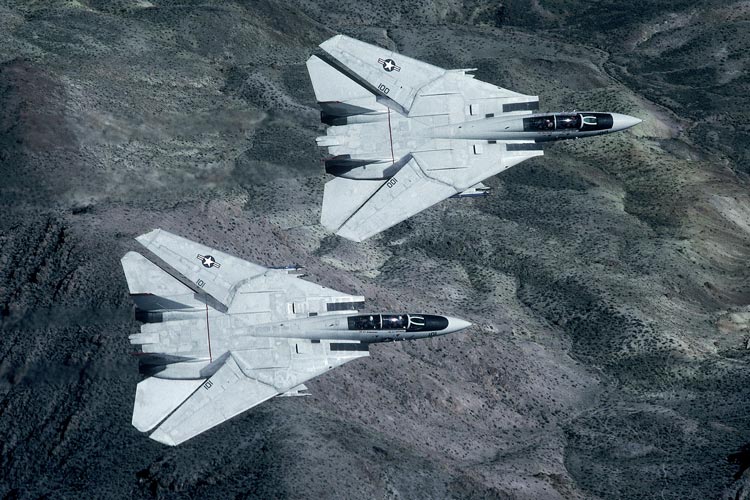
The carrier-based multirole F-14 Tomcat, which was introduced in the 1970s and was retired in 2006, utilized MIL-DTL-38999 connectors as part of its advanced avionics and electronic systems.
The 1970s when MIL-DTL-38999 was introduced were a pivotal decade in military and aerospace development across land, air, and sea. Many of today’s modern military systems experienced their initial developments and deployments throughout this important period.
Older third-generation fighters like the McDonnell Douglas F-4 and the Northrop F-5 were making way for newer, more advanced airframes with greater range, speed, agility, and capabilities like the Grumman F-14, McDonnell Douglas F-15, and the General Dynamics F-16. The latter two are still in widespread service with the U.S. Air Force with plans to sustain and improve those fleets well into the future.
On the ground, new armored vehicle systems included the M1A1 Abrams main battle tank and M2 Bradley infantry fighting vehicle that were to replace aging platforms like the M60 Patton and M113 armored personnel carrier.
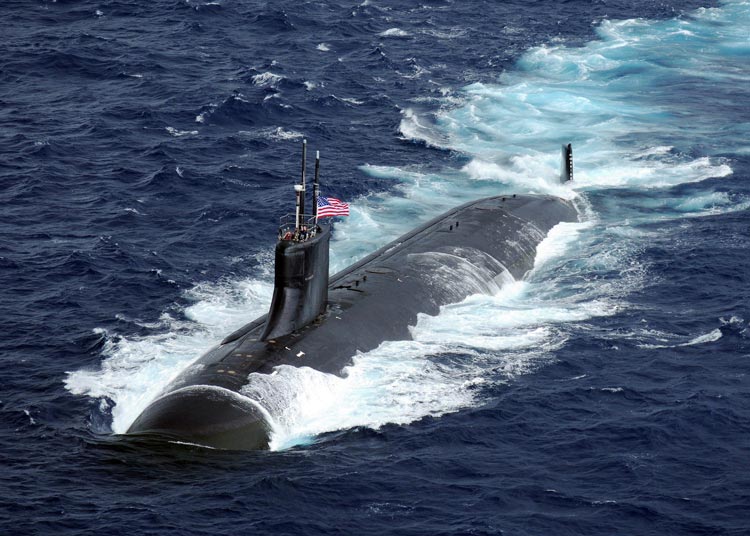
The Aegis Combat System, which revolutionized naval warfare with its advanced radar and missile systems capable of tracking and engaging multiple targets simultaneously, was developed throughout the 1970s before it was first deployed on Ticonderoga-class cruisers in the early 1980s. New classes of modern submarines began to come online throughout the 1970s and early 1980s too, such as the nuclear-powered fast-attack Los Angeles Class that was commissioned in 1976. Development of the Tomahawk Missile, the U.S. military’s primary long-range, precision-strike cruise missile for land and sea targets, also began in the 1970s.
These new, revolutionary systems all had one thing in common. They required a new series of high-density electrical connections needed for sophisticated avionics, radar, and communication systems with superior environmental sealing and durability in harsh environments. The new MIL-DTL-38999 connectors provided this, helping deliver next-generation aerospace capabilities such as the digital fly-by-wire flight control system introduced in the F-16 that replaced traditional mechanical and hydraulic flight control systems of the past. MIL-DTL-38999 also brought a smaller and lighter profile than its MIL-C-5015 predecessor to help meet tighter pitches and stricter weight thresholds of newer systems.
Today’s Benchmark in Harsh Environment Circular Connectors
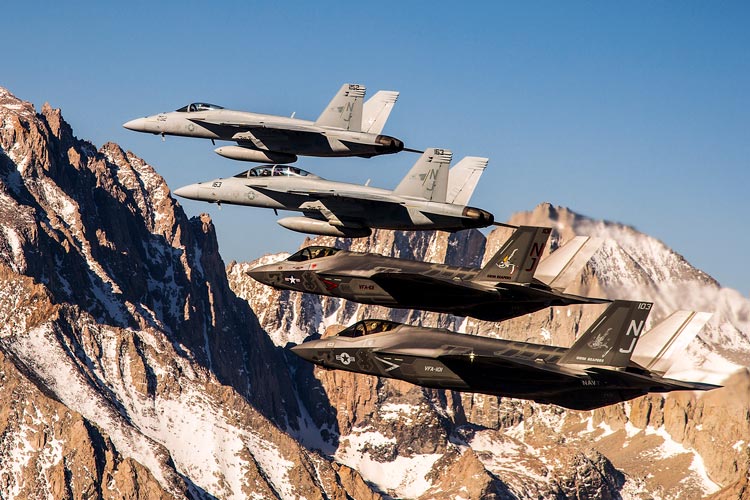
MIL-DTL-38999 is still relied on to this day throughout military and aerospace applications for harsh environment interconnect solutions due to their proven reliability and durability.
Amphenol Aerospace produces three major variants of MIL-DTL-38999, with a host of derivatives to support any application.
MIL-DTL-38999 Series I
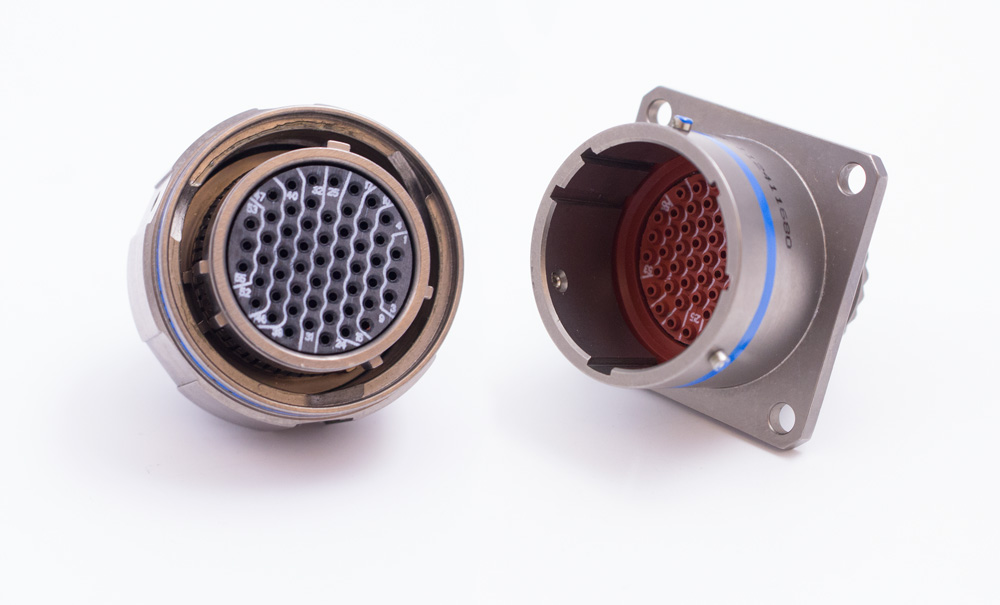
Amphenol Aerospace MIL-DTL-38999 Series I connectors feature a bayonet coupling mechanism for secure and robust connections. These connectors excel in high-vibration and shock-prone environments due to their rugged construction. Made with corrosion-resistant materials, they are suitable for use in harsh conditions, including extreme temperatures and exposure to moisture.
Series I connectors are available in a variety of shell sizes and contact arrangements. Their high contact density allows for efficient space and weight management, making them an excellent choice for mission-critical systems. Environmental sealing with grommets and seals offers superior protection against dust, water, and contaminants.
MIL-DTL-38999 Series II
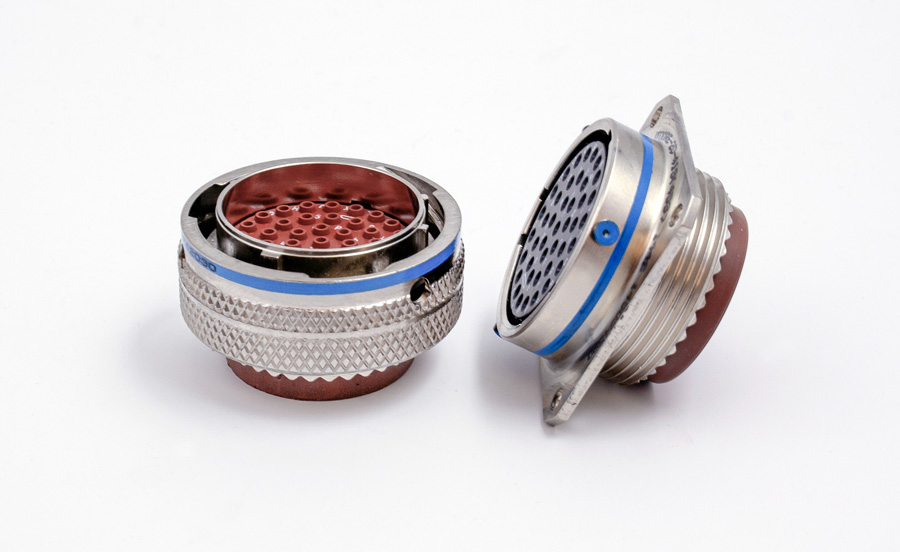
Amphenol Aerospace MIL-DTL-38999 Series II connectors are known for their bayonet coupling mechanism, which allows for quick and easy mating and unmating, providing convenience and reliability in field applications. These connectors are designed to be lightweight while still offering high durability and resistance to environmental extremes.
Series II connectors come in a range of shell sizes and configurations, with fewer contacts compared to Series I, focusing on applications where quick connectivity and moderate contact density are essential. They feature a compact design, making them suitable for space-constrained applications while still providing robust environmental sealing to protect against contaminants and moisture.
MIL-DTL-38999 Series III
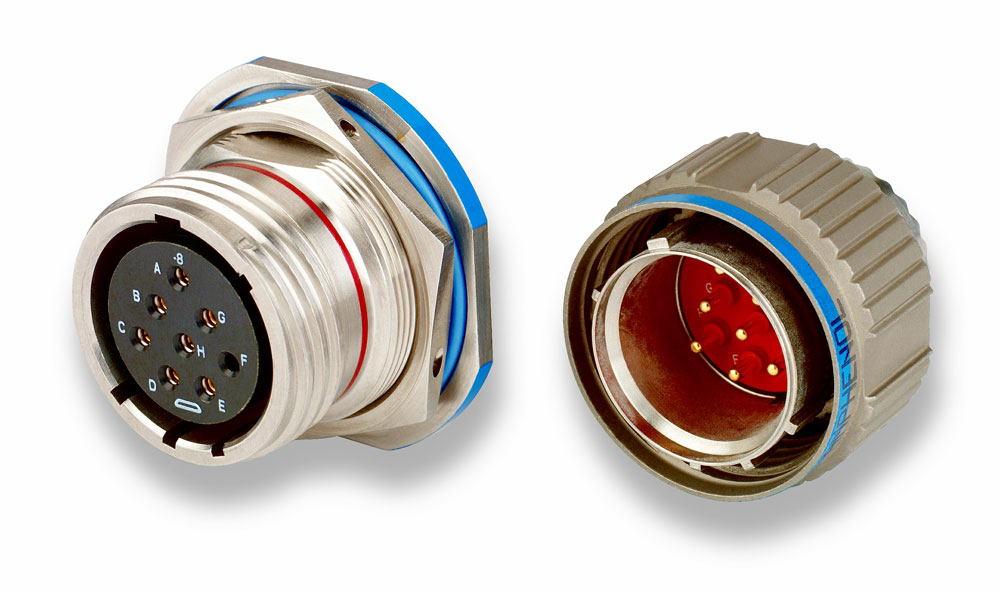
Amphenol Aerospace MIL-DTL-38999 Series III connectors are distinguished by their enhanced anti-decoupling mechanism and high-vibration resistance, making them ideal for the most demanding applications. These connectors feature a tri-start threaded coupling mechanism with a self-locking system, ensuring a secure connection that withstands severe vibrations.
Series III connectors are designed for high-density contact arrangements, offering maximum connectivity in a compact form factor. They are constructed from materials that provide excellent corrosion resistance and can operate in a wide temperature range. Series III connectors also include superior EMI shielding capabilities and environmental sealing, making them suitable for use in environments where EMI and harsh conditions are a concern. This series is particularly favored for aerospace and military applications that require the highest levels of performance and reliability.
For more information, check out Amphenol Aerospace’s MIL-DLT-38999 product lines.